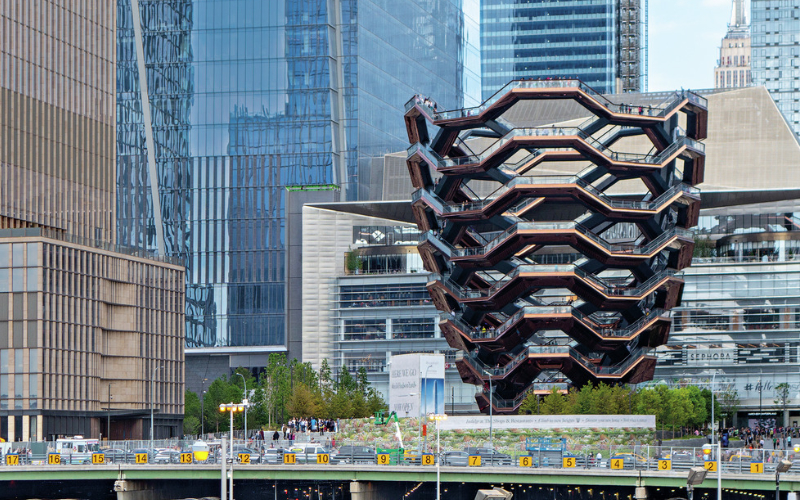Back | Blog posts overview
Hudson Yards: from railyard to riches
The largest private development in US history, Hudson Yards, boasts a modern, sustainable design. It's prime location near the Hudson River in New York City comes at the price of exposure to both marine and de-icing salts. With corrosion resistance in mind, stainless steel emerges as an integral part of the mini-city, most notably in an interactive center piece called the "Vessel".

© istockphoto.com/mirror-images
Since its initial ground breaking in 2012, Hudson Yards has transformed a busy railyard into a chic, multifunctional space. The US$25 billion development will have 2.5 million square meters of commercial, entertainment, educational and residential space upon completion with over 56,000 square meters of public space and greenery.
Some of the buildings and structures in the project boast glimmering surfaces and a clean geometric design. Multiple elements make a significant use of Type 316L or 2205 stainless steels. The 2% molybdenum content in Type 316L stainless steel provides heightened corrosion resistance. With 2205 duplex stainless steel, the molybdenum-content rises to 3%, providing even greater resistance to atmospheric corrosion. New York is coastal and uses significant amounts of deicing salts, hence the need for increased protection against aggressive chlorides. The new neighbourhood has particularly high deicing salt exposure because the primary wind direction in winter blows deicing salts off the adjoining Henry Hudson Parkway towards the site. The first phase of Hudson Yards, including the Vessel sculpture first opened to the public in 2019.
With only half of Hudson Yards completed and open to the public, the story is just beginning.
Discover more about the key role molybdenum-containing stainless steels have played in the development of Hudson Yards, particularly in its center piece the Vessel.
Back | Blog posts overview

